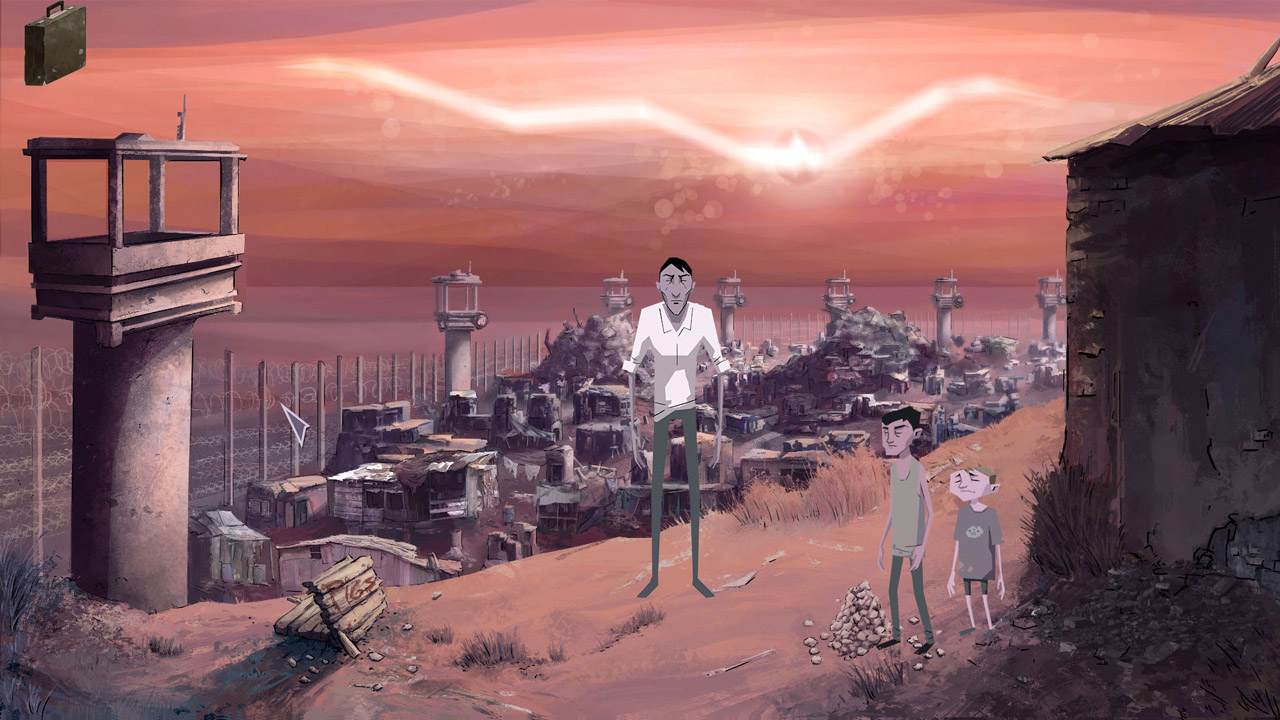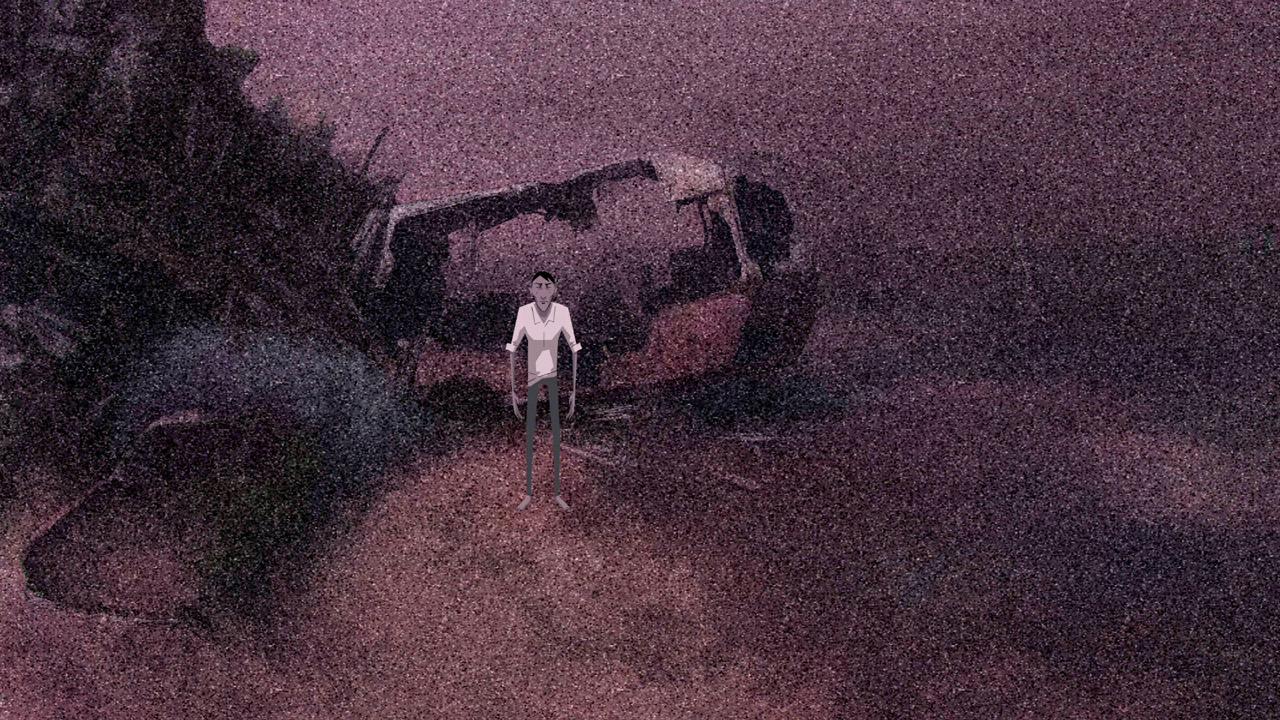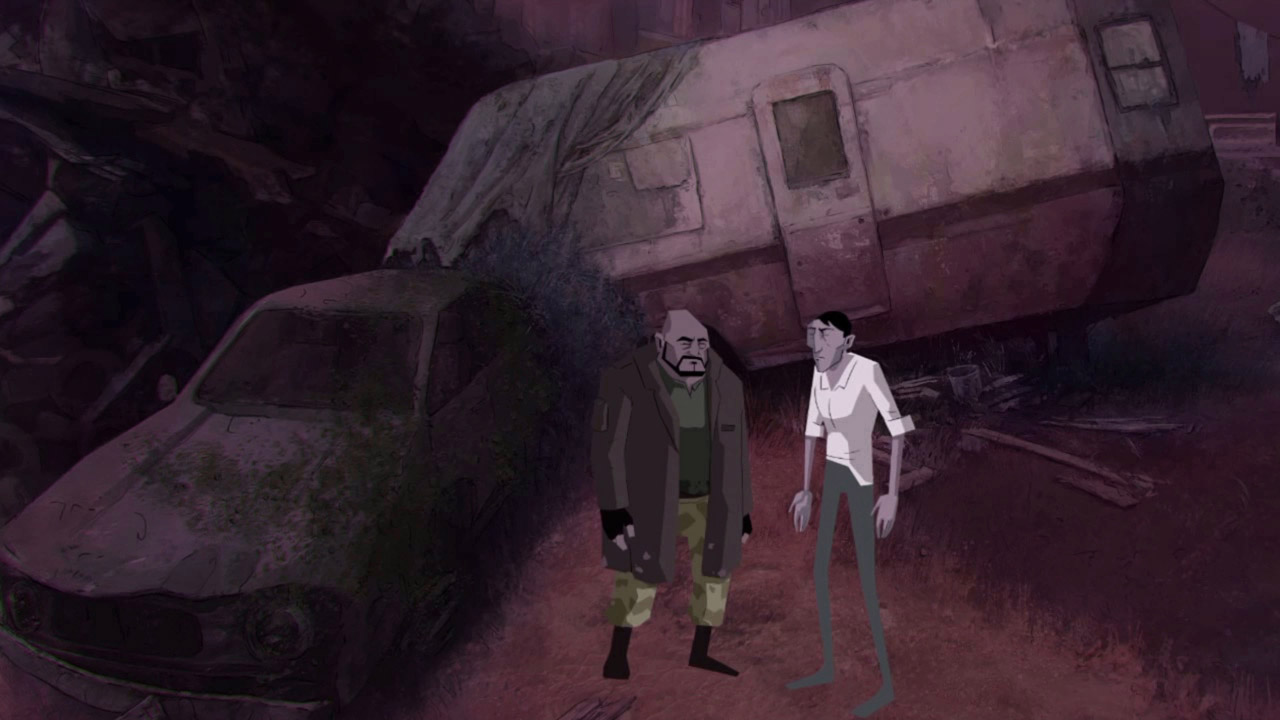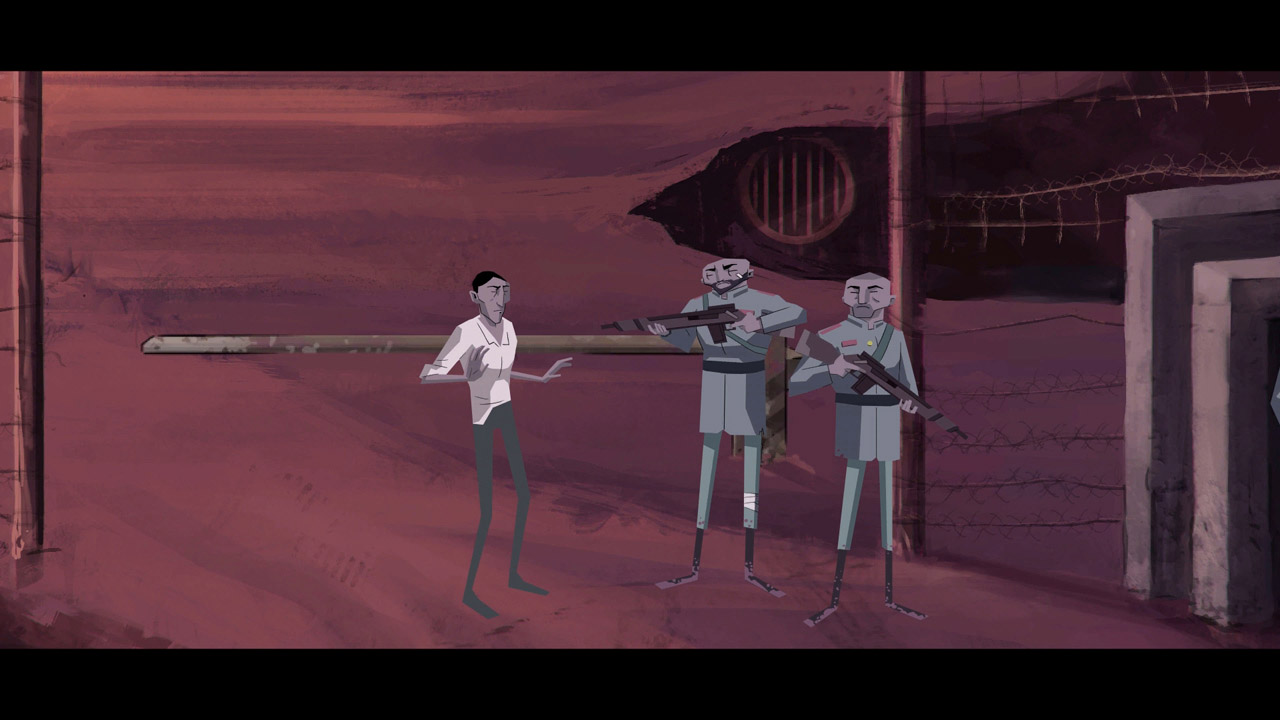Dead Synchronicity is an upcoming point and click game coming to us from Fictiorama Studios. The title is a throwback to adventure games from the past but with a more mature, and darker story. Luis, Producer and PR Manager, took some time out of his busy schedule to divulge some insights into this compelling adventure.
AiG: Hi Luis, thanks for taking the time to answer some questions! So, can you give us some background on your studio and yourself?
Lui: At Fictiorama, we are four people strong. It’s funny that three of us are brothers: Mario Oliván (Unity programmer), Alberto (writer and composer), and myself, Luis.
Only Martín Martínez, our artist, is not part of the family, but we are thinking of adopting him!
We started working on Dead Synchronicity: Tomorrow Comes Today more than a year and a half ago, although it wasn’t until last November that we decided to go full-steam ahead and acquired office space. Martín joined the crew, and here we are!
I’m in charge of managing the resources, checking progress, contacting media; the usual roles for a producer and a PR manager.
What is it like to work with your brothers professionally?
The most important thing about that is being able to separate the personal and the professional part of our relationship. We are dealing with video games, a very creative field, so it’s not unusual that we discuss different matters very passionately, as we all want the best for the game.
Once we leave the office though, the discussion remains there. And, as a last resource, if things get too passionate, we can always call our mum to set things right. She still knows how to handle us!
Are there difficulties you have experienced being an indie studio based outside of the USA?
Not that I can think of. Maybe regarding funding, things would be easier in the USA. Currently, it’s very hard to get funds for a video game studio in Spain.
It’s true that it’s a bit more difficult to contact US media when you are based outside, and even more so when your studio is as tiny as ours, but even so, our Kickstarter campaign has been featured on a lot of sites, some of them really influential.
We want to sincerely thank them all, as well as Artistry in Games. Without the support of media, backers, and players spreading the word, our campaign would have never succeeded.
Was there any direct inspiration for your studio’s name?
We wanted to get a name for the studio that sounded like tales, like entertainment, like a close source of fiction that has always been there telling stories.
So we thought of “fiction” and the Greek suffix “horama”, which means “view” as in “cinerama”, the 70’s widescreen process.
In fact, Fictiorama reminds us of some fabulous dream-producing device you can entrust with your amusement. We love it!
For those who do not know, what is your game Dead Synchronicity about?
Dead Synchronicity: Tomorrow Comes Today is a 2D point-and-click adventure game, that features “old school” mechanics (inventory, dialogue trees, hotspots and items) and a mature, bloodstained plot.
It’s the first installment in the Dead Synchronicity series. The whole saga will tell the story of Michael, a man who wakes up after being in a kind of a coma. Unfortunately, the world he wakes up to is not the one he fell asleep in. “The Great Wave”, an inexplicable chain of natural disasters, has plunged the world into chaos. There is also the “dissolved” pandemic. Sick people begin developing strange cognitive powers and ultimately dying, dissolving into blood.
Given this happy scenario, Michael will have to recover his identity, try to find the origin of “the Great Wave” and a cure for the “dissolved” pandemic. If he doesn’t hurry, he won’t be able to avoid the impending moment of “dead synchronicity”, when time dissolves unto itself.
What are the distinguishing factors between your game and the many adventure games on the market?
Firstly, although ours isn’t the first “mature” adventure game, point-and-click games are usually more focused on comic stuff, or even “light” thrillers.
Additionally, our goal with Dead Synchronicity: Tomorrow Comes Today is to offer a more lively visual style than is usually seen in the genre. Zooming in for conversations, close-ups for inner reflections, distorting backgrounds, and more will be featured in the final release.
Again, we are not the first studio to include this kind of dynamic visual style in a point-and-click adventure game. However, if you consider all of these things, as well as the plot, the art style, the rock music, and the 90’s “open approach” the game will feature, we think the mixture is interesting enough to stand out.
You describe your game as “dark.” Why is that? What sort of themes can we expect to explore?
Well, that’s a matter a lot of people have asked us about, both on Kickstarter and on Greenlight. Usually “dark” or “mature” are seen as synonyms of “gory” or “b*****”. In our game there will be some gory moments, and a few of the screenshots we have shown are quite spooky, yes.
However we usually say our adventure is “dark” because of the story. It’s set in a merciless world, where people survive, even by ruthless means. Moral standards have changed, and things we would consider horrid in our “civilized” societies are seen as common things in this “post Great Wave” time. The players themselves would be forced to do things they don’t want to in order to finish the game.
In fact, one of our influences is Cormac McCarthy’s, The Road. In the novel, the post-apocalyptic scenario is used not only as background for the story, but also as a moral metaphor.

I really love the art style of the game. It allows for some great scenery and expressive characters, while contributing to the bleak atmosphere. Were there any inspirations when deciding on this particular style?
We wanted to get a style that kept the player’s attention at first sight but also really suited the story. So, we looked into two really powerful sources; on the one hand, expressionism. That’s where the angular, straight characters as well as the lights and shadows come from. Regarding that style, the art of Robert Valley has been a huge inspiration for us.
On the other hand, tribal art has been really inspiring for us as well; not only ancient tribal art, but also the contemporary vision of artists like Roberto Guayasamin.

What are some of the difficulties in trying to tell a mature, adult-oriented story?
The main difficulty is how to measure the way the player is going to be moved by the story. To be honest, that’s our main goal with “Dead Synchronicity”; make the players feel sadness, thrills, anger, relief, all while having a good time solving puzzles and advancing the story.
So, when you try to manage so many sensitive subjects, it’s hard to know when you are hitting the nail on its head. According to the feedback we are receiving about the demo, it seems like we are achieving our goal so far though.
This is the first game in the saga. How many games are you planning on developing?
The whole story is already written, and we always thought of making two installments. However, there’s a set of locations that Michael will visit just after the end of the first game that are really intriguing. They feature lots of dreamlike, weird shades.
It will eventually depend on the sales of the first installment if we can do three games or not. If the sales allow, it will be great! But with two planned initially, we would also aim to tell the entire story.
Congratulations on your Kickstarter being a success and being greenlit! Do you have a release window in mind for when we can get our hands on the game?
Thanks a lot! Our goal is to release PC & Mac versions of the game this year (November/December) and Linux and iOS versions early 2015. Fingers crossed!
What is the best way for those interested to keep up to date on the game?
Our most up to date info comes from Twitter, though we usually post the same stuff on Facebook. Furthermore, we have a development blog; right now it’s a bit outdated because of the Kickstarter hurricane… but we usually post lots of interesting content, including the “Finding inspirations” articles.
If all this sounds like your cup of tea, Fictiorama has a demo available for download here. Keep in mind, it is early alpha, but still worth checking out!
A gallery of some screens from the game.
[envira-gallery id=”14257″]
Fictiorama was kind enough to provide some concept art along with their finished versions, allowing us to see the world come alive from the original designs.
[envira-gallery id=”14258″]
Thanks again Luis and everyone else at Fictiorama for your time and the art!




 …WOOLY DESERVES BETTER LOL!
…WOOLY DESERVES BETTER LOL!